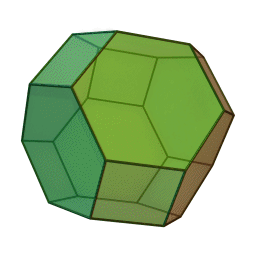Metal foam





Metal foam is a cellular structure made from solid metal featuring a large volume fraction of gas-filled pores. These pores can be either closed-cell or open-cell, with the cells defined by a thin solid metal layer. Metal foams combine the characteristic properties of metals with those of gas, resulting in a lightweight material with unique physical properties.
Properties and Characteristics[edit]
Metal foams possess a unique combination of properties not found in traditional dense metals or alloys. These include:
- Low Density: The presence of pores significantly reduces the material's density compared to solid metals.
- High Porosity: Metal foams typically have 75-95% porosity, contributing to their lightweight.
- High Surface Area: The structure of metal foams provides a high surface area to volume ratio.
- Energy Absorption: Metal foams can absorb and dissipate energy, making them useful in impact absorption and vibration damping applications.
- Thermal Conductivity: The thermal conductivity of metal foam can be adjusted based on the base metal used and the porosity level, making them suitable for heat exchangers and cooling devices.
Production Methods[edit]
Several methods exist for producing metal foams, including:
- Gas Injection: Metal is melted and a gas is injected into the melt, creating bubbles that solidify in the metal matrix.
- Powder Metallurgy: Metal powders are mixed with a foaming agent, compacted, and then heated to a temperature that decomposes the foaming agent, releasing gas that creates pores in the metal.
- Replication Process: A preform made of a removable material (e.g., salt beads) is infiltrated with molten metal; once solidified, the preform material is removed, leaving behind a metal foam.
Applications[edit]
Due to their unique properties, metal foams are used in a wide range of applications:
- Automotive Industry: For lightweight structures, energy absorption in crash protection, and as heat exchangers.
- Aerospace Industry: In components where weight reduction is critical, and for thermal management systems.
- Biomedical Applications: As bone scaffolds for bone ingrowth due to their porosity and mechanical properties.
- Architecture and Design: For aesthetic elements and structural components that benefit from the material's lightweight and distinctive appearance.
Challenges and Limitations[edit]
While metal foams offer many advantages, there are also challenges in their production and use:
- Cost: The production processes for metal foam can be expensive, limiting its use in cost-sensitive applications.
- Consistency and Control: Achieving consistent properties and controlling the size and distribution of pores can be difficult, affecting the material's performance.
Future Directions[edit]
Research in metal foam technology focuses on developing new production methods, improving material properties, and expanding applications. Innovations in additive manufacturing, for example, offer new possibilities for creating complex metal foam structures with precise control over their architecture.
Ad. Transform your life with W8MD's Budget GLP-1 injections from $75


W8MD offers a medical weight loss program to lose weight in Philadelphia. Our physician-supervised medical weight loss provides:
- Weight loss injections in NYC (generic and brand names):
- Zepbound / Mounjaro, Wegovy / Ozempic, Saxenda
- Most insurances accepted or discounted self-pay rates. We will obtain insurance prior authorizations if needed.
- Generic GLP1 weight loss injections from $75 for the starting dose.
- Also offer prescription weight loss medications including Phentermine, Qsymia, Diethylpropion, Contrave etc.
NYC weight loss doctor appointmentsNYC weight loss doctor appointments
Start your NYC weight loss journey today at our NYC medical weight loss and Philadelphia medical weight loss clinics.
- Call 718-946-5500 to lose weight in NYC or for medical weight loss in Philadelphia 215-676-2334.
- Tags:NYC medical weight loss, Philadelphia lose weight Zepbound NYC, Budget GLP1 weight loss injections, Wegovy Philadelphia, Wegovy NYC, Philadelphia medical weight loss, Brookly weight loss and Wegovy NYC
|
WikiMD's Wellness Encyclopedia |
| Let Food Be Thy Medicine Medicine Thy Food - Hippocrates |
Medical Disclaimer: WikiMD is not a substitute for professional medical advice. The information on WikiMD is provided as an information resource only, may be incorrect, outdated or misleading, and is not to be used or relied on for any diagnostic or treatment purposes. Please consult your health care provider before making any healthcare decisions or for guidance about a specific medical condition. WikiMD expressly disclaims responsibility, and shall have no liability, for any damages, loss, injury, or liability whatsoever suffered as a result of your reliance on the information contained in this site. By visiting this site you agree to the foregoing terms and conditions, which may from time to time be changed or supplemented by WikiMD. If you do not agree to the foregoing terms and conditions, you should not enter or use this site. See full disclaimer.
Credits:Most images are courtesy of Wikimedia commons, and templates, categories Wikipedia, licensed under CC BY SA or similar.
Translate this page: - East Asian
中文,
日本,
한국어,
South Asian
हिन्दी,
தமிழ்,
తెలుగు,
Urdu,
ಕನ್ನಡ,
Southeast Asian
Indonesian,
Vietnamese,
Thai,
မြန်မာဘာသာ,
বাংলা
European
español,
Deutsch,
français,
Greek,
português do Brasil,
polski,
română,
русский,
Nederlands,
norsk,
svenska,
suomi,
Italian
Middle Eastern & African
عربى,
Turkish,
Persian,
Hebrew,
Afrikaans,
isiZulu,
Kiswahili,
Other
Bulgarian,
Hungarian,
Czech,
Swedish,
മലയാളം,
मराठी,
ਪੰਜਾਬੀ,
ગુજરાતી,
Portuguese,
Ukrainian


